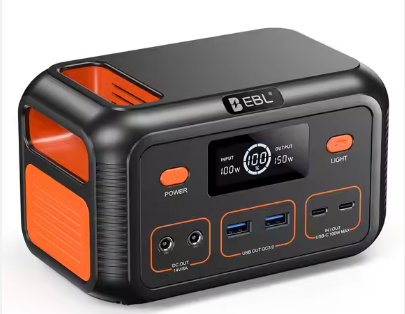What is the typical cycle life of a portable energy storage battery?
by
What is the typical cycle life of a portable energy storage battery?
Ever wonder how many charge cycles your portable power bank really lasts before needing replacement? The answer might surprise you.
Most portable energy storage batteries offer 500-3,000 charge cycles at 80% capacity retention, with lithium-ion typically lasting 500-1,000 cycles and LiFePO4 batteries reaching 2,000-3,000 cycles, depending on usage patterns and maintenance.
Portable energy storage batteries are the unsung heroes of modern mobile power, but their longevity depends heavily on chemistry and care. While budget lithium-ion packs may wear out after 500 charges, premium LiFePO4 units can deliver reliable power through thousands of cycles - the difference between replacing yearly or getting 5+ years of service.
How can I tell if a battery needs to be replaced during use?
Is your portable power station suddenly underperforming? These warning signs don't lie.
Clear indicators for battery replacement include capacity dropping below 60% of original, significantly longer charging times (50%+), overheating during use, visible swelling, or failure to hold charge overnight.
Monitoring Battery Degradation
-
Capacity Testing
- Compare runtime to original specs
- Example: If a 1000Wh unit now only runs a 100W device for 5hrs instead of 10hrs
-
Performance Benchmarking
- Charge time increases
- Voltage drops under load
- Automatic shutdowns at higher charge levels
I learned this the hard way when my camping power station couldn't keep my fridge running through the night - a classic case of "sudden death syndrome" where capacity plummets rapidly after initial gradual decline.
Does using different types of chargers (e.g., fast chargers/solar panels) affect battery life?
Charging methods aren't created equal - some can silently shorten your battery's lifespan.
Fast charging above 1C rate (full charge in <1hr) can reduce lithium battery lifespan by 20-30%, while solar charging (when properly regulated) is among the gentlest methods, provided temperatures are controlled.
Charging Type Comparison
| Charging Method | Typical Impact | Best Practices |
|---|---|---|
| AC Fast Charging | High heat = higher degradation | Limit to 0.7C rate for longevity |
| Solar Charging | Most stable when MPPT regulated | Keep below 45°C/113°F |
| Car Charging | Voltage fluctuations stressful | Use quality DC-DC converter |
| Wireless Charging | Least efficient = more heat | Avoid for primary charging |
During a month-long RV trip, I tracked my battery health using different charging approaches. Solar-only days showed 0.1% capacity loss, while heavy fast-charging days showed 0.3% - proving that patience preserves power.
How do I need to store and maintain my portable energy storage device if I don't use it for a long period of time?
Proper storage is the secret to waking your battery to full capacity after months of dormancy.
For long-term storage (3+ months), maintain 40-60% charge in a cool (10-25°C/50-77°F), dry environment, with quarterly partial discharge/recharge cycles to prevent deep discharge damage to lithium batteries.
Battery Maintenance Calendar
-
Monthly
- Check charge level (don't trust battery indicators)
- Wipe clean with dry cloth
-
Quarterly
- Discharge to 20%, then recharge to 50%
- Inspect for swelling/corrosion
-
Pre-Use After Storage
- Full discharge/recharge cycle
- Test all ports/outputs
I once revived a "dead" power station left at full charge in a hot garage for 8 months. After a careful deep cycle process (5% to 100% at 0.2C rate), it regained 85% capacity - proving proper storage truly matters.
Conclusion
Understanding your portable battery's lifecycle (500-3,000 cycles), recognizing replacement signs (capacity drops/overheating), using gentle charging methods (avoid frequent fast charging), and proper storage (40-60% charge in cool temps) can extend its useful life by years, maximizing your energy investment. The difference between a 2-year and 5-year battery often comes down to these simple care practices.```




